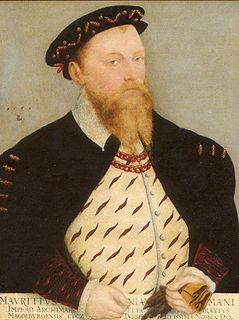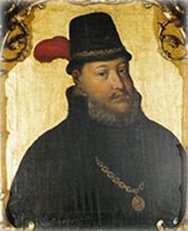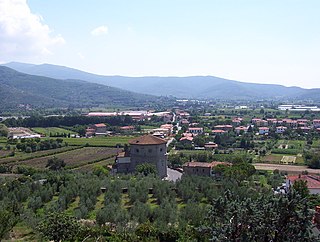
Melchor Cano was a Spanish Scholastic theologian.

Lorenzo Lotto was an Italian painter, draughtsman and illustrator, traditionally placed in the Venetian school, though much of his career was spent in other North Italian cities. He painted mainly altarpieces, religious subjects and portraits. He was active during the High Renaissance and the first half of the Mannerist period, but his work maintained a generally similar High Renaissance style throughout his career, although his nervous and eccentric posings and distortions represented a transitional stage to the Florentine and Roman Mannerists.
John Taylor was an English churchman and academic, Bishop of Lincoln from 1552 to 1554.
Jean de Ligne, Duke of Arenberg was Baron of Barbançon, founder of the House of Arenberg and stadtholder of the Dutch provinces of Friesland, Groningen, Drenthe and Overijssel from 1549 until his death.

Shahghali also Shah Ali or Shah Ghaly, (1505–1567) was khan of the Qasim Khanate and the Khanate of Kazan
The Jesuits, or Society of Jesus, a Roman Catholic religious order, have had a long history of missions in East and South Asia from their very foundation in the 16th century; St. Francis Xavier, a friend of St. Ignatius of Loyola and co-founder of the Society, visited India, the Moluques, Japan and died (1552) as he was attempting to enter China.

Maurice was Duke (1541–47) and later Elector (1547–53) of Saxony. His clever manipulation of alliances and disputes gained the Albertine branch of the Wettin dynasty extensive lands and the electoral dignity.

Albert V was Duke of Bavaria from 1550 until his death. He was born in Munich to William IV and Maria Jacobäa of Baden.

Bartolomé Carranza was a priest of the Dominican Order, theologian and Archbishop of Toledo. He is notable for having been persecuted by the Spanish Inquisition. He spent much of his later life imprisoned on charges of heresy. He was first denounced in 1530, and imprisoned during 1558–1576. The final judgement found no proof of heresy but secluded him to the Dominican cloister of Santa Maria sopra Minerva where he died seven days later.

Leandro Alberti (1479–1552) was an Italian Dominican historian.

Sebestyén "Lantos" Tinódi was a 16th-century Hungarian lyricist, epic poet, political historian, and minstrel.
The Third Order of Saint Dominic is a Roman Catholic third order affiliated with the Dominican Order.

Claude d'Annebault was a French military officer; Marshal of France (1538–52); Admiral of France (1543–1552); and Governor of Piedmont in 1541. He led the French invasion of the Isle of Wight in 1545. Annebault was governor of Normandy and a very powerful figure during the reign of King Francis.
Bartolomeo Spina was an Italian Dominican theologian and scholastic philosopher.
Lancelotto Politi (1483–1553) was an Italian Dominican canon lawyer.
William Good (1527–1586) was an English Jesuit.
Anthony Belasyse, also Bellasis, Bellows and Bellowsesse was an English churchman and jurist, archdeacon of Colchester from 1543.

Bernhard VIII, Count of Lippe was from 1547 until his death in 1563 ruling the County of Lippe.

The Master of Naval Ordnance was an English Navy appointment created in 1546 the office holder was one of the Chief Officers of the Admiralty and a member of the Council of the Marine and a member of the Office of Ordnance until the post was abolished in 1589. He was responsible for the supply of naval ordnance for the navy.
















